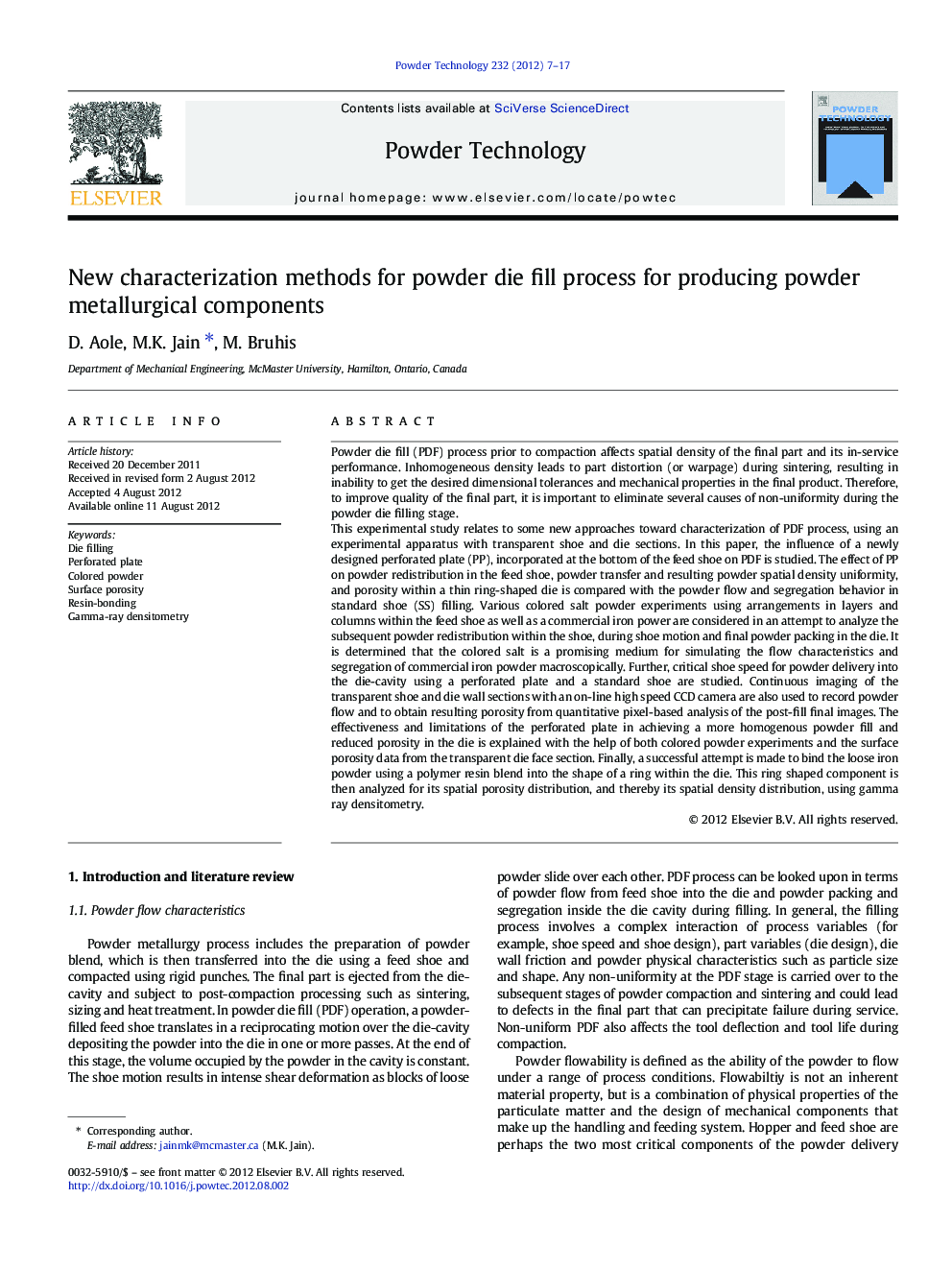| Article ID | Journal | Published Year | Pages | File Type |
|---|---|---|---|---|
| 236952 | Powder Technology | 2012 | 11 Pages |
Powder die fill (PDF) process prior to compaction affects spatial density of the final part and its in-service performance. Inhomogeneous density leads to part distortion (or warpage) during sintering, resulting in inability to get the desired dimensional tolerances and mechanical properties in the final product. Therefore, to improve quality of the final part, it is important to eliminate several causes of non-uniformity during the powder die filling stage.This experimental study relates to some new approaches toward characterization of PDF process, using an experimental apparatus with transparent shoe and die sections. In this paper, the influence of a newly designed perforated plate (PP), incorporated at the bottom of the feed shoe on PDF is studied. The effect of PP on powder redistribution in the feed shoe, powder transfer and resulting powder spatial density uniformity, and porosity within a thin ring-shaped die is compared with the powder flow and segregation behavior in standard shoe (SS) filling. Various colored salt powder experiments using arrangements in layers and columns within the feed shoe as well as a commercial iron power are considered in an attempt to analyze the subsequent powder redistribution within the shoe, during shoe motion and final powder packing in the die. It is determined that the colored salt is a promising medium for simulating the flow characteristics and segregation of commercial iron powder macroscopically. Further, critical shoe speed for powder delivery into the die-cavity using a perforated plate and a standard shoe are studied. Continuous imaging of the transparent shoe and die wall sections with an on-line high speed CCD camera are also used to record powder flow and to obtain resulting porosity from quantitative pixel-based analysis of the post-fill final images. The effectiveness and limitations of the perforated plate in achieving a more homogenous powder fill and reduced porosity in the die is explained with the help of both colored powder experiments and the surface porosity data from the transparent die face section. Finally, a successful attempt is made to bind the loose iron powder using a polymer resin blend into the shape of a ring within the die. This ring shaped component is then analyzed for its spatial porosity distribution, and thereby its spatial density distribution, using gamma ray densitometry.
Graphical abstractA novel test-rig was utilized to study the powder die fill process under varying shoe speeds for different types of powders. An on-line high speed camera system was utilized to image the powder body through transparent shoe and die faces. The images of the powder body were utilized to understand powder flow behavior, segregation characteristics and density distribution.Figure optionsDownload full-size imageDownload as PowerPoint slideHighlights► A new experimental set-up for studying powder die fill process has been developed. ► A method of binding the loose powder in the die has been developed. ► New methods for powder porosity measurement in the loose (uncompacted, green) state have been developed.
